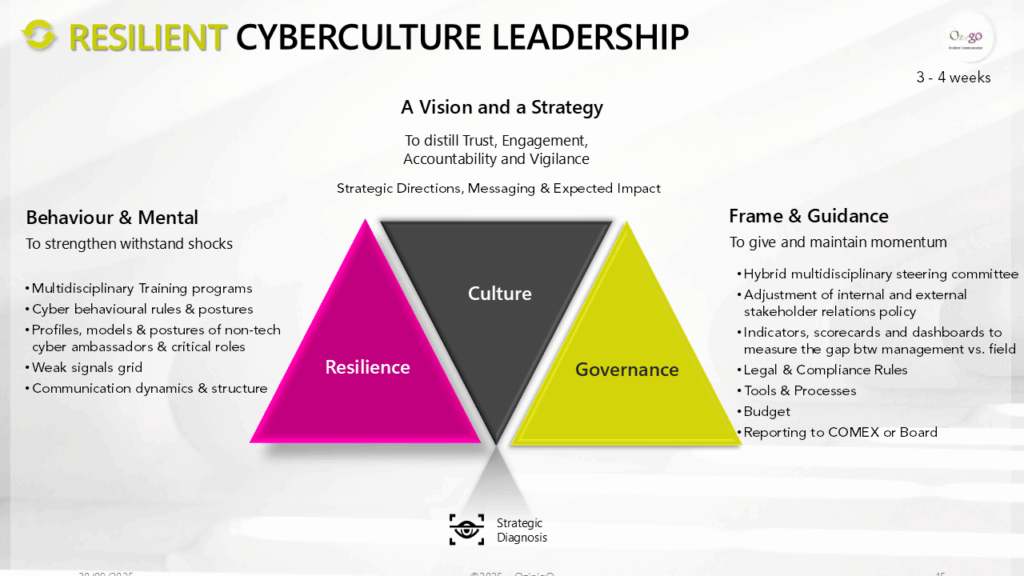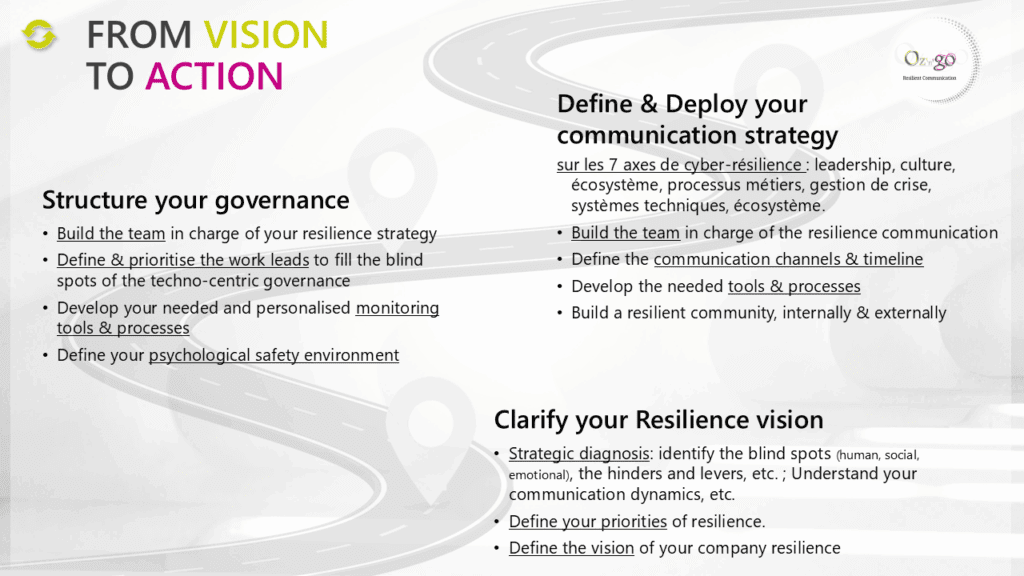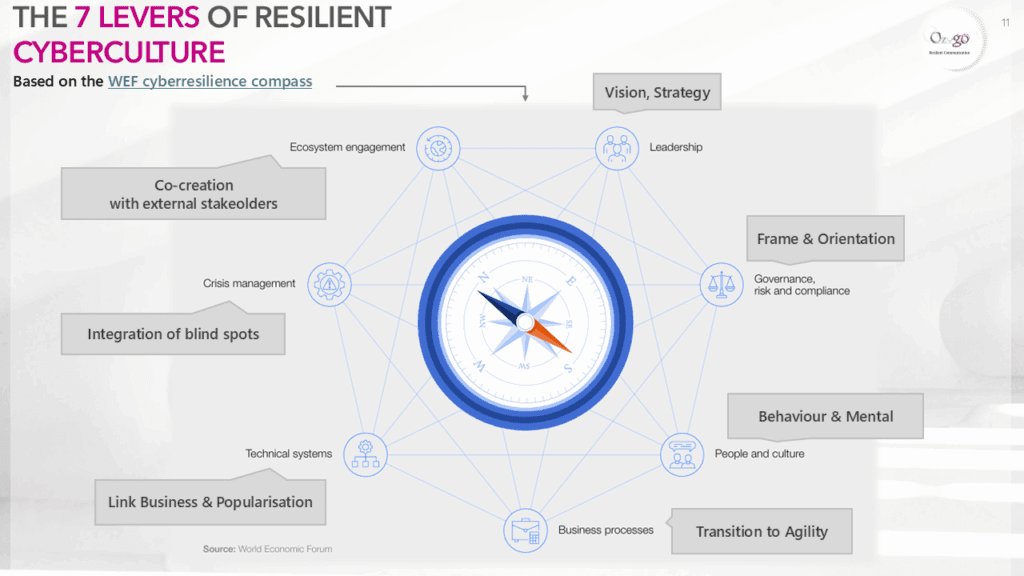Resilient Governance
Drive your Business differently
Long before communication, resilience begins with how you manage your teams, partners and customers.
Observation
Companies are increasingly turning to technology to reduce costs, increase revenue, and improve the customer experience.
The danger in this race toward technological advancement is the loss of human contact and the loss of sight of human psychological and emotional needs. This is exactly what fuels cyber vulnerabilities. How? Here are a few concrete examples:
- Employees under pressure → cognitive fatigue, loss of confidence and vigilance → errors.
- Customers faced with automated support services → loss of confidence, frustration and reduced engagement → errors.
- Suppliers reduced to KPIs → relationship based on mistrust rather than cooperation → errors.
- Partners treated as interchangeable → weakening of the ecosystem → errors.
In other words, short-term governance that leaves openings for cyber threats.
It is high time to include the human dimension with a resilience governance.
Governance that connects technology and a culture of resilience.
integrating human, social and emotional aspects into cyber protection for:
- restoring meaning,
- (re)building trust,
- establishing a management system that promotes cohesion and collective vigilance.age qui favorise la cohésion et la vigilance collective.

What is resilience?
The word is often associated with psychology—that ability, dear to Boris Cyrulnik, to bounce back after a difficult experience.
But in an organisation, resilience goes further. As NATO points out, it refers to the collective ability to anticipate, resist, absorb, recover, and adapt in the face of disruptions, whether technological, economic, human, or reputational.
Resilience governance is governance that prepares before, guides during, and rebuilds after. It connects strategic vision, operational decisions, and team confidence in a single movement.
From Vision
to Action
Resilience is a competitive advantage. With a clear roadmap, your company can:
- Reduce hidden vulnerabilities.
- Improve performance and responsiveness in the face of crises.
- Strengthen the confidence of your teams, customers and partners.
- Gain a pioneering image that can serve as a model.
- Attract the best talents.

The cyber resilience according to WEF
conveyed by Oz’n’gO through a common thread: communication.
- Leadership: embody a positive and inspiring vision of resilience, and communicate it clearly.
- Culture: develop and nurture a cyber awareness that stimulates lasting vigilance reflexes, both individually and collectively.
- Governance: drive using human indicators as well as strategic and technical indicators, in an atmosphere of psychological safety.
- Ecosystem: co-create a cyber environment with customers, suppliers and partners.
- Business process: gain agility and adaptability so that they can continue to operate despite the crisis.
- Crisis management: expand the scope of application of processes and procedures to facilitate collective responses.
- Technical systems: bring cybersecurity closer to business and simplify the jargon.

When cyber governance incorporates human resilience, it becomes the foundation for a sustainable reputation. And this foundation comes to life with a tailored resilience communication strategy and plan.
